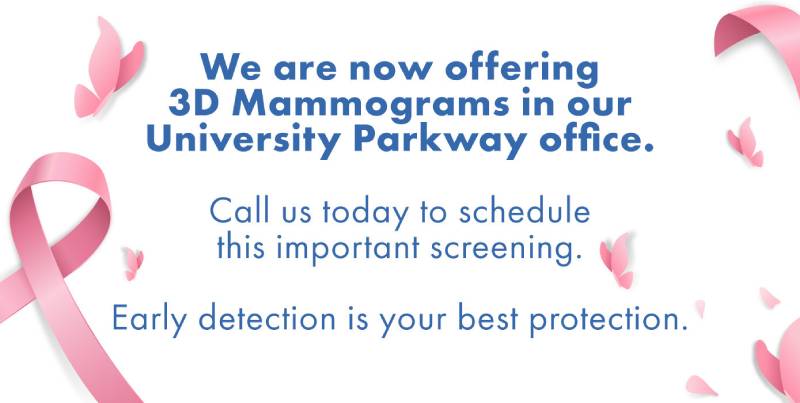Emergency C-Section
Delivering a healthy baby is probably your greatest concern when you are pregnant, and during this exciting time, there are many changes on the horizon, including planning for the arrival of your baby. Perhaps you have a birth plan mapped out that includes a vaginal delivery, but for many reasons, this birth plan could change at a moment’s notice. Whether you plan to deliver your baby through vaginal birth or opt for scheduled c-section childbirth, both of these options can go out the window if you need an emergency c-section. Rest assured, this will only happen when it is the safest option for both you and your baby. To ease your mind, University Park OBGYN has laid out a guide to possible emergency c section reasons and why you may need one.
What is an Emergency C Section?
An emergency c section is an immediate type of surgical childbirth that will only occur when a mother and their baby are at dire risk. The health and safety of you and your child are the immediate concern of your doctor. 1that being said, typically, an emergency c section takes place no more than half an hour after deciding to perform one.
Emergency c section, and even a scheduled c section, are both major surgeries that require organization and a team of skilled and trained healthcare professionals. At University OBGYN, our team is trained in performing emergency c section surgery, so you can rest assured you will always be in good hands under our care.
Types of Emergency C-Section Surgeries
Even if you have planned a c-section with your physician, you can still end up needing an emergency c-section. Whether scheduled, planned, or even unplanned, all of these procedures are called medical c-sections because they are done for various health reasons. An elective c-section is one you choose to have. Reasons for emergency c section may vary, but here are some of the different types of c-sections you may encounter during childbirth:
- A Scheduled C-section
This takes place after you and your doctor, in advance, have decided that the safest form of delivery for you and your baby is a scheduled c-section. This may be due to having a prior c-section, or having a health condition, so the procedure will often be planned months before your estimated delivery date. - Unplanned C-section
This occurs when you previously planned to deliver your baby vaginally, but a few weeks, days, or hours before giving birth, the decision is made to proceed with a c-section instead. This is due to your doctor deciding the safest course of action for you and your baby in a non-emergency situation, and the change of plans is done to preserve your safety and the safety of your baby. - Emergency C-section
This type of c-section occurs when there is an urgent, unplanned need to ensure you and your baby are safe in a dire situation. An emergency c-section may need to be performed even if you had previously planned a vaginal birth or scheduled c-section.
What Happens During Emergency C Section?

You are probably wondering, “how long does an emergency c section take?” and what emergency c section time looks like during the medical procedure. A major difference in an emergency c section is that preparation is critical because everything must move urgently, including how your pain medications are administered to the baby getting delivered. During a scheduled c section, most women have the surgery performed after local or regional numbing, called anesthesia, which is administered, usually through a spinal injection called an epidural. This takes time, but it also means you will not feel pain during the procedure while you are awake.
In contrast, an emergency c section may not allow for this timing, and your options for anesthesia can be affected due to hospital policies and the details of your individual situation. You may already have an epidural in place, or your doctor and anesthesiologist may decide there is time to administer one if the timing is right. Stll, these options may not be possible in all circumstances. As an alternative, you may undergo injected and inhaled general anesthesia to make sure you are pain-free during surgery, allowing the c-section to happen more quickly.
Finally, emergency c section time, in terms of recovery, may depend on the incision made during surgery. In a non-emergency c-section, a horizontal cut is usually performed on the bikini line. Even in an emergency, if you are at term, this kind of incision will usually be made as well. Suppose you are in emergency surgery when your baby’s health is at dire risk and needs immediate attention. In that case, the surgeon may make a vertical incision on the uterus to get your baby out faster. This may be necessary for preterm birth or if previous surgeries of fibroids are in the way of your uterus. All circumstances of childbirth vary, and your needs, your baby’s needs, and the surgeon’s training will all be taken into consideration to ensure safe delivery.
Reasons for Emergency C Section
Emergency c section reasons can and will vary depending on your situation. Ultimately, reasons for an emergency c section typically are for the safety of mother and the baby. Whether an emergency c section is performed due to health concerns or otherwise, know that the emergency c section is only performed when it is absolutely necessary and waiting for progress is not the safest choice. Here are reasons for emergency c section that may occur:
Delayed Labor
Delayed labor, also called prolonged labor, is when labor goes on much longer than it normally should, causing health concerns for both the mother and her baby. This is one of the most common reasons for an emergency c section. Around eight percent of pregnant women who are about to give birth experience prolonged labor, and here are some of the reasons why this may happen:
- You may have had prolonged contractions, but they did not seem to do anything, meaning your labor did not actually start. In this instance, you may not be dilating as you normally would and should either.
- Everything may seem on the right track when contractions and dilation start, but labor is stalled because this all stops. In this case, this type of delayed labor can occur when your baby’s head cannot fit through your pelvis.
Positioning of Your Baby
Your baby’s position may be a concern in advance, or your baby can get into a breech position last minute. Either way, if your baby is not in the right position for delivery, your labor may not progress as you expected. Your baby may be positioned with their behind first, which is a breech position, feet first, or stretched out sideways, called transverse. In these cases, vaginal delivery may not be possible. Sometimes, your baby can be turned under controlled conditions, but this is not always successful.
Exhaustion
You may have tried pushing, or your doctor may have even tried a vacuum-assisted delivery to no avail, and you are probably too tired to push anymore. After this, your health may even begin to show signs of distress and exhaustion, or your baby’s fetal monitor may show an elevated heart rate, and pushing is no longer a viable option. Your doctor may then make the call to continue with an emergency c section.
Health Conditions Arise
Sometimes health conditions may come up during labor, such as an infection or herpes becoming activated during delivery, harming the baby. On another hand, your blood pressure may be too high, and pushing is no longer a safe, viable option. Finally, an emergency c-section may be required if you suddenly develop a heart or brain issue during childbirth.
Umbilical Cord Tangled
An emergency c section may be necessary if the umbilical cord tries to come out before your baby or if it gets compressed or tangled. This rare complication can pose a serious health risk to your baby.
Problems with the Placenta
Similar to the umbilical cords, the problems with the placenta may also complicate delivery. Placental abruption can occur, meaning all or part of the placenta separates from the lining of your womb, and your baby will not be able to get oxygen and necessary nutrients. This complication will most likely require an emergency c-section as well.
Tearing of the Womb
Rarely, your womb can become torn or ruptured due to the increased pressure on your body during birth, requiring an emergency c-section. You may be at an increased risk of this complication if you have had a prior c-section.
Emergency C-Section Risks

Emergency cesareans have different risks than scheduled ones, such as an increased risk of severe hemorrhage, blood clots, complications from urgently administered anesthesia, and accidental injury to you or your baby. Some risks to consider may occur after childbirth, such as side effects of medications administered and their implications of breastfeeding. Skin-to-skin contact may not be possible right after the birth either. Whatever your experience, support is available, and lactation consultants are here to help you meet your goals. There is a higher risk of PTSD after an emergency c section and its effects as well, so it is important to care for yourself and your mental health after delivery. Your doctor can help connect you to a mental health professional to help you fully recover.
Emergency C Section Time to Recover
You may be wondering how long does an emergency c section take and what is the emergency c section time to recover. Like with other major surgeries, you will need time to rest and fully recover. You may require bed rest and not be able to lift or climb stairs for some time. You may not be able to pick up your baby as your incision heals or if you are sore. You will additionally need to follow up with your physician to monitor the healing of your incision site to make sure there is no infection. In terms of breastfeeding, your doctor can help you determine when it is safe after completing certain medications. As we mentioned before, PTSD may be a side effect of emergency c-section as well, so be sure to talk to your doctor if you are experiencing postpartum depression or are having trouble coping.
The Takeaway
Ultimately, your doctor’s decision to perform an emergency c-section will be due to it being the best option for you to deliver a healthy baby. The need to do so may arise due to a number of reasons. Though it may be a big change from your initial birth plan, your doctor cannot control this outcome, and neither can you. The most important thing is for you and your baby to remain safe and healthy during childbirth. At University Park OBGYN, our highly trained, skilled, and compassionate physicians are here to help you achieve just that. Give us a call or visit our website today to schedule an appointment with us and start receiving the care you deserve during this exciting time in your life.


